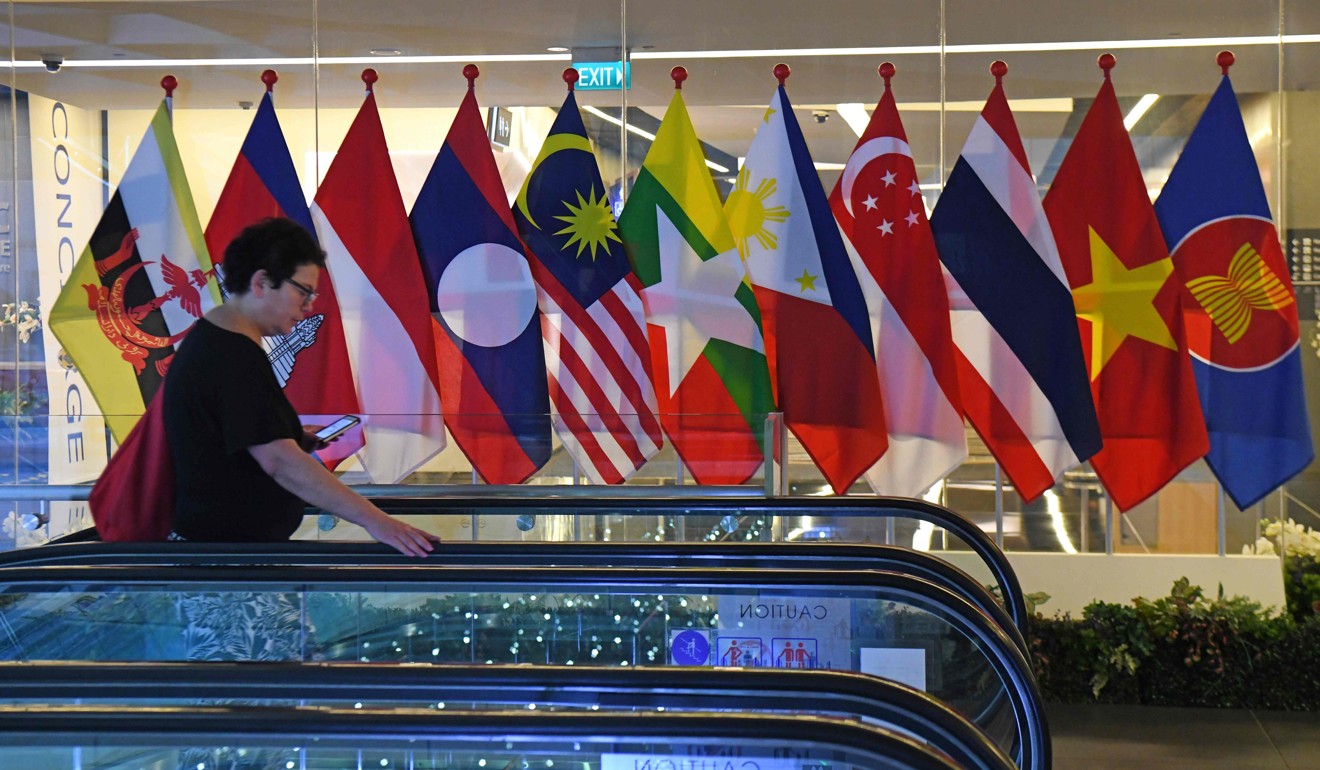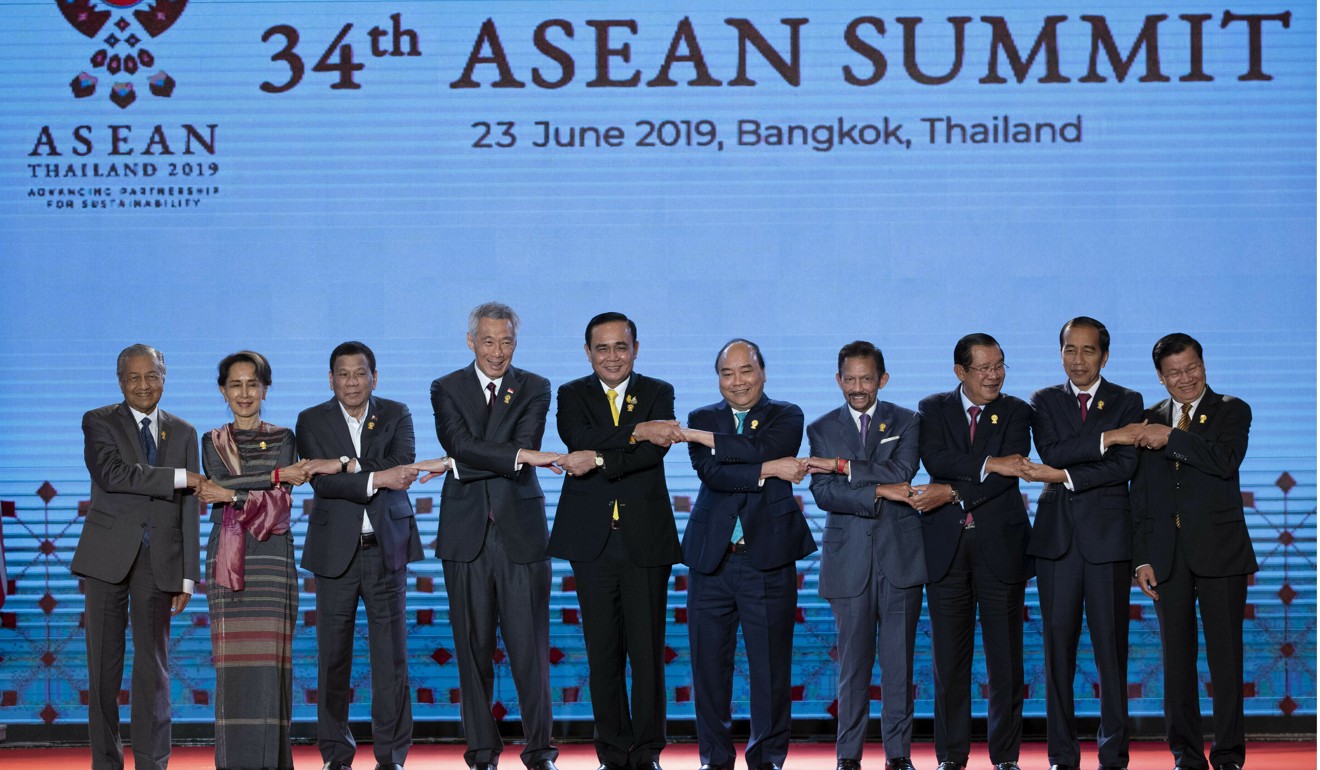
Can China’s trade boost with Asean help get the Regional Comprehensive Economic Partnership over the line?
- 16-nation trade deal has been debated for seven years, but the success of another regional pact might just be enough to help bring the negotiations to a conclusion, observers say
- Trade between China and the Association of Southeast Asian Nations rose 4 per cent in the first half of the year
The success of the Asean-China Free Trade Area in helping to boost business amid Beijing’s tariff dispute with the United States bodes well for the upcoming talks on the creation of a Regional Comprehensive Economic Partnership (RCEP), analysts say.
According to figures released by Beijing earlier this month, China’s trade with the Association of Southeast Asian Nations in the first six months of 2019 rose 4 per cent year on year to US$291.8 billion.
The 10-member bloc was China’s second-largest trading partner in the period – behind the European Union – after leapfrogging the US.

Discussions on the creation of the free-trade agreement – involving China, Asean, Australia, India, Japan, New Zealand and South Korea – have been ongoing since 2012. And while progress has been slow – there have already been 26 rounds of negotiations – the heads of the member states pledged in November to complete the deal this year.
If completed, RCEP would be the world’s biggest trading bloc.
Asean comprises Indonesia, Thailand, Malaysia, Singapore, Philippines, Vietnam, Myanmar, Cambodia, Brunei and Laos.
The Zhengzhou talks, which start on Monday and run through July 31, will be followed by a meeting of trade ministers in Beijing on August 2 and 3, while the leaders of the 16 nations are expected to reconvene in November.

Maxfield Brown, head of the business intelligence unit for Asean at consultancy firm Dezan Shira, said that while the slowdown in economic growth around the region had put pressure on leaders to finalise the RCEP deal, China’s increased trade with Asean would provide a fillip for the upcoming talks.
The Asean-China Free Trade Area (ACFTA) had helped Chinese firms exposed to US tariffs imposed since the start of the trade war to relocate their manufacturing facilities to Asean countries while maintaining sourcing networks in mainland China, he said.
“As one of China’s oldest and best used FTAs, ACFTA’s structure is expected to form a significant part of any future RCEP agreement,” he said.
China may offer reduced tariffs to push through RCEP
Tong Jiadong, a professor of international trade at Nankai University in north China’s Tianjin, said Beijing was keen to increase regional integration through RCEP and other means, particularly against the backdrop of rising US-China tensions.
“These measures have helped to lessen the impact [of the trade war],” he said.
A deal on RCEP is far from decided, however, with India raising concerns about the risk its poses to its economy – if it resulted in the removal of tariffs on Chinese imports – and more widespread calls for better labour and environmental protections.
“India remains concerned about it becoming a de facto free-trade agreement with China, and Chinese goods flooding the Indian market,” said Rupa Chanda, a professor of economics at the Indian Institute of Management in Bangalore.
“Unless this is resolved, I think it will be difficult to conclude by the end of the year,” she said.
“Apart from this, there are still issues of environmental and labour clauses being insisted on by some countries, and the issue of IP [intellectual property protection]. So several thorny issues remain.”

